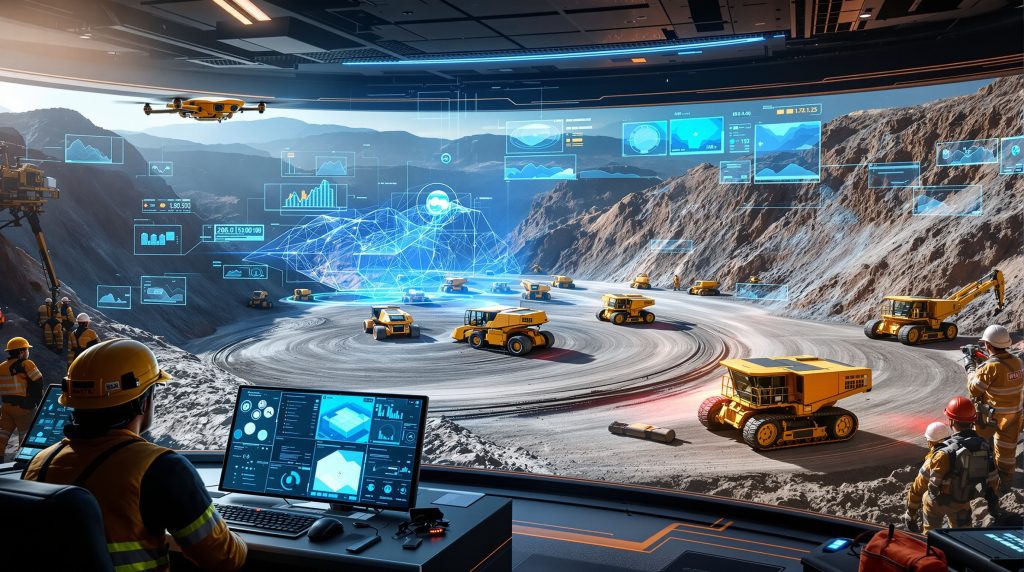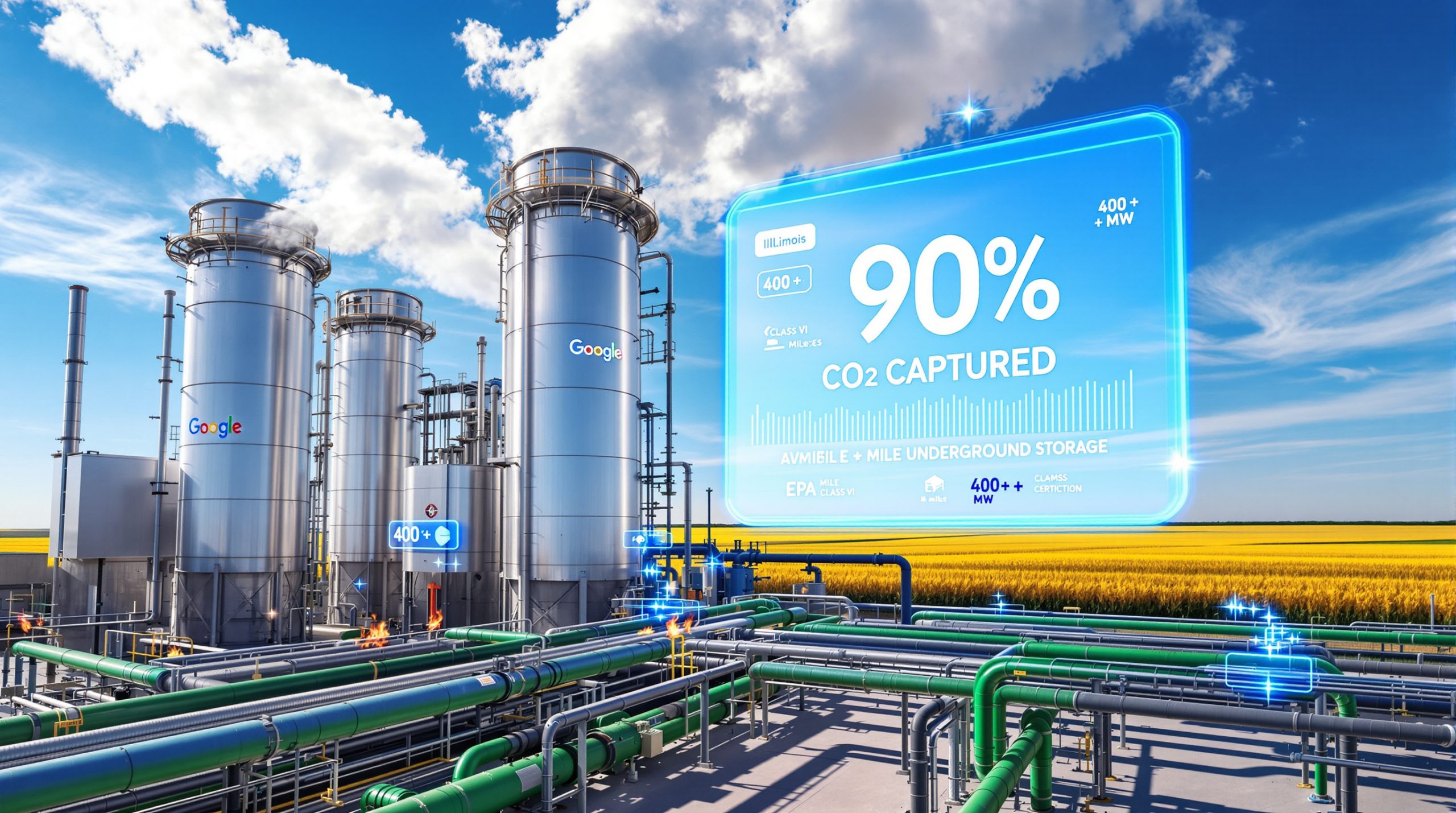How Are AI and Robotics Transforming Mining Safety?
The mining industry has witnessed a remarkable evolution in safety protocols, transitioning from basic protective equipment to sophisticated technology-driven systems. Today's modern mining operations implement intelligent monitoring platforms that continuously assess environmental conditions, equipment status, and personnel locations to proactively identify potential hazards before they escalate into dangerous situations.
The Evolution of Mining Safety Systems
Traditional mining safety relied heavily on protective gear and manual inspections. In contrast, contemporary operations leverage networks of sensors, cameras, and data analytics to create comprehensive safety ecosystems. These systems can detect subtle changes in environmental conditions like gas levels, ground movement, or equipment performance anomalies that human observers might miss.
According to industry reports, mines implementing advanced monitoring systems have reduced recordable incidents by up to 35% compared to operations using conventional safety approaches. This shift from reactive to predictive safety management represents one of the most significant advancements in protecting mining personnel in decades.
AI-Powered Collision Avoidance Technologies
Collision accidents represent a persistent danger in mining operations, particularly in environments where large equipment operates in proximity to workers or other vehicles. Advanced collision avoidance systems combine multiple sensing technologies to create comprehensive awareness zones around mining equipment.
These systems utilize radar for distance detection, LiDAR for precise spatial mapping, and computer vision algorithms for object identification. Real-time analytics process this sensor data to automatically alert operators or trigger emergency responses when collision risks are detected.
Mark Deziel, Global Director of Mining at Hatch, highlights how modern safety technology offers "a practical, cost-effective path to safer, more productive operations" through retrofitting existing equipment with advanced safety features rather than replacing entire fleets (Global Mining Review, 2025).
Implementation of these technologies has shown impressive results, with some operations reporting collision-related incident reductions exceeding 60% within the first year of deployment. The systems prove particularly valuable in low-visibility environments where dust, fog, or inadequate lighting might compromise operator awareness.
Autonomous Equipment and Remote Operations
Perhaps the most effective approach to improving mining safety involves removing personnel from hazardous environments entirely. AI in Mining Operations now handles many high-risk tasks that previously required human operators to work in dangerous conditions.
Remote operation centers allow technicians to control multiple machines simultaneously from the safety and comfort of control rooms, sometimes located hundreds of kilometers from the actual mining site. This approach dramatically reduces exposure to common mining hazards including:
- Respirable dust and airborne particulates
- Excessive noise and vibration
- Unstable ground conditions
- Extreme temperatures and weather conditions
- Potential equipment malfunctions or failures
Beyond safety improvements, remote operations offer additional benefits including reduced fatigue-related errors, standardized operating procedures, and continuous operation without shift changes. These advantages contribute to both enhanced safety performance and improved operational efficiency.
What Technologies Enable Smarter Mining Operations?
The concept of "smart and safe mining technologies" encompasses a broad ecosystem of interconnected technologies that optimize resource extraction, processing, and transportation. These innovations transform traditional mining operations into data-driven mining operations capable of making real-time decisions based on comprehensive information from throughout the value chain.
Interoperable Autonomy Systems
A significant advancement in mining technology involves the development of interoperable autonomy systems that allow machines from different manufacturers to communicate and coordinate effectively. This interoperability represents a critical evolution beyond proprietary systems that required complete fleet standardization.
Modern interoperability frameworks enable mining companies to gradually upgrade existing equipment with autonomous capabilities rather than replacing entire fleets. This approach significantly reduces capital expenditure requirements while providing a practical transition path toward automation.
LoopX, a Canadian company developing AI and robotics solutions, exemplifies this trend with technology that allows "existing fleets to be retrofitted with advanced safety and automation features" (Global Mining Review, 2025). This approach addresses a key industry challenge: implementing new technologies without disrupting ongoing operations or requiring prohibitive capital investments.
The technology works through standardized communication protocols and interface layers that translate between proprietary control systems, allowing equipment from different manufacturers to share operational data and coordinate movements within the same mining environment.
AI-Driven Predictive Analytics
The volume of data generated by modern mining operations is unprecedented, with equipment sensors, environmental monitoring systems, and process controls producing continuous streams of information. Artificial intelligence, particularly machine learning algorithms, transforms this raw data into actionable intelligence.
These systems analyze historical and real-time operational data to:
- Predict equipment failures before they occur
- Optimize maintenance schedules to reduce downtime
- Identify inefficiencies in extraction and processing workflows
- Adjust operational parameters to maximize yield and minimize waste
- Coordinate complex logistics and material movement
Mining operations implementing comprehensive AI analytics platforms have reported productivity improvements of 15-20% through reduced unplanned downtime, optimized equipment utilization, and more efficient process workflows.
The predictive maintenance capabilities prove particularly valuable for critical equipment like excavators, crushers, and conveyance systems, where unexpected failures can cost hundreds of thousands of dollars per hour in lost production.
Digital Twins and Virtual Mining Models
Digital twin technology creates comprehensive virtual replicas of physical mining operations, enabling engineers to visualize, simulate, and optimize complex processes without disrupting actual production. These sophisticated models integrate data from throughout the mining operation to maintain accuracy and provide actionable insights.
The capabilities of mining digital twins include:
- Simulating operational changes before physical implementation
- Testing equipment configurations in virtual environments
- Training personnel on complex procedures without operational risks
- Optimizing mine planning and resource extraction sequencing
- Troubleshooting issues by examining historical operational data
Chao Yu, founder and CEO of LoopX, emphasizes how AI-driven solutions "transform how mines operate – unlocking new levels of safety, efficiency, and sustainability" (Global Mining Review, 2025). Digital twin technology exemplifies this transformation by providing unprecedented visibility into complex mining operations.
The value of these virtual models increases over time as they accumulate historical data, enabling increasingly sophisticated analyses and more accurate predictive capabilities. This evolving intelligence helps mining operations continuously improve rather than merely maintain performance.
How Do Smart Technologies Improve Environmental Sustainability?
The mining industry faces increasing pressure to reduce environmental impact while maintaining production levels. Smart technologies offer solutions that enhance sustainability by enabling more precise resource extraction, comprehensive environmental monitoring, and optimized energy utilization.
Real-Time Environmental Monitoring
Advanced sensor networks now monitor environmental conditions throughout mining operations, providing immediate alerts when parameters exceed predefined thresholds. These systems collect data on:
- Air quality, including dust levels and gas concentrations
- Water quality in surrounding watersheds and processing facilities
- Ground stability and potential subsidence risks
- Noise and vibration levels that might affect surrounding communities
- Weather conditions that could impact operational safety or environmental controls
The real-time nature of these monitoring systems enables proactive responses to potential environmental issues before they develop into significant problems. When anomalies are detected, automated alert systems notify environmental specialists who can implement corrective actions immediately.
This approach represents a significant advancement over traditional environmental monitoring, which often relied on periodic sampling and laboratory analysis that could take days or weeks to provide actionable information. The immediate feedback from real-time systems allows for dynamic adjustment of mining processes to maintain environmental compliance continuously.
Precision Extraction Methods
Smart mining technologies enable more targeted resource extraction, reducing the volume of waste material generated and minimizing environmental disturbance. Computer vision systems and AI-guided drilling equipment can identify specific mineral deposits with unprecedented accuracy, allowing operators to extract valuable resources while leaving surrounding material undisturbed.
These precision methods deliver several environmental benefits:
- Reduced waste rock and tailings production
- Lower energy consumption through processing fewer total materials
- Decreased water usage in mineral separation and processing
- Smaller physical footprint of mining operations
- Minimized disruption to surrounding ecosystems
Mining operations implementing precision extraction technologies have reported waste material reductions of 20-40% compared to conventional methods, with corresponding decreases in energy consumption and water usage. These improvements contribute to both environmental sustainability and operational efficiency.
Energy Optimization Systems
Intelligent energy management platforms analyze power usage patterns across mining operations and automatically adjust systems to minimize consumption. These platforms incorporate several key capabilities:
- Real-time monitoring of energy usage throughout the operation
- Automated scheduling of energy-intensive activities during off-peak hours
- Integration of renewable energy sources when available
- Identification of equipment operating outside optimal efficiency parameters
- Dynamic load balancing to prevent demand spikes
Some mining operations have achieved energy consumption reductions of 15-25% through comprehensive energy optimization systems, particularly when combined with electrification and decarbonisation. These improvements directly reduce both operational costs and environmental impact, demonstrating how smart technologies can align economic and sustainability objectives.
The partnership between engineering firms like Hatch and technology developers demonstrates industry commitment to "building safer, smarter, and more sustainable mining transformation" through technological innovation (Global Mining Review, 2025). This collaborative approach accelerates the development and implementation of sustainability-enhancing technologies across the mining sector.
What Are the Economic Benefits of Smart Mining Technologies?
While safety and environmental improvements represent compelling reasons to implement smart mining technologies, the economic benefits provide the business case that drives adoption. These technologies deliver substantial returns through operational efficiency improvements, workforce optimization, and extended equipment lifecycles.
Operational Efficiency Improvements
Autonomous systems and AI-driven optimization platforms have demonstrated significant productivity improvements in mining operations worldwide. Autonomous haulage systems, for example, have shown productivity increases of 15-30% compared to manually operated fleets through:
- Continuous operation without shift changes or operator breaks
- Optimized routing and traffic management
- Consistent operating parameters and reduced variability
- Elimination of operator-induced equipment damage
- Precise adherence to maintenance schedules
These productivity gains translate directly to improved profitability, with some large-scale operations reporting annual savings in the tens of millions of dollars following comprehensive automation implementation. The economic returns often justify the substantial investment required for these technologies, particularly for operations with remaining lifespans of 10+ years.
The ability to retrofit existing equipment rather than replacing entire fleets represents a particularly attractive approach for many operations. This strategy provides "a practical, cost-effective path to safer, more productive operations" while minimizing capital expenditure requirements (Global Mining Review, 2025).
Labor Cost Optimization
Smart mining technologies change workforce requirements significantly, typically reducing the number of equipment operators while creating demand for technical specialists. This transition often leads to overall labor cost reductions while creating higher-skilled, better-compensated positions within mining operations.
Remote operation centers allow a single technician to monitor multiple autonomous machines simultaneously, dramatically improving labor efficiency. These centers also offer improved working conditions that help mining companies attract and retain skilled employees who might otherwise pursue opportunities in other industries.
The workforce transformation extends beyond equipment operation to maintenance and planning functions. Data analysts extract actionable insights from operational metrics to drive continuous improvement, while maintenance specialists focus on preventative interventions rather than emergency repairs.
This evolution requires mining companies to invest in comprehensive training programs and often develop partnerships with educational institutions to create talent pipelines for technical roles. These investments, while substantial, typically deliver positive returns through improved operational performance and reduced recruitment challenges.
Extended Equipment Lifecycles
Predictive maintenance systems powered by AI analytics have demonstrated the ability to extend equipment lifecycles by 15-20% in many mining operations. These systems monitor equipment performance continuously, analyzing patterns that might indicate developing issues before they cause catastrophic failures.
The benefits of extended equipment lifecycles include:
- Reduced capital expenditure requirements for fleet replacement
- Lower repair costs through early intervention
- Minimized production losses from unplanned downtime
- Optimized maintenance scheduling to maximize equipment availability
- More accurate financial planning through predictable equipment lifespans
The financial impact of these benefits can be substantial, particularly for large operations with extensive equipment fleets. For example, extending the operational life of a large mining truck fleet by 15% can represent millions of dollars in deferred capital expenditure, improving overall return on investment significantly.
What Challenges Face Smart Mining Technology Implementation?
Despite the compelling benefits of smart mining technologies, implementation presents significant challenges that mining companies must address to realize the potential value. These challenges span technical integration issues, cybersecurity concerns, and workforce development requirements.
Integration With Legacy Systems
Many mining operations have developed over decades, resulting in complex environments with equipment and systems from multiple generations of technology. Integrating new smart technologies with existing infrastructure requires careful planning and often custom engineering solutions.
Common integration challenges include:
- Incompatible communication protocols between new and legacy systems
- Limited sensor capabilities on older equipment
- Inadequate data infrastructure for high-volume information transfer
- Operational disruption during technology implementation
- Validation requirements to ensure system reliability and safety
Successful integration typically requires developing custom interfaces and protocols to ensure seamless communication between autonomous systems and legacy equipment. This approach allows mining companies to implement new technologies incrementally, gradually building toward comprehensive smart mining operations without disrupting ongoing production.
The focus on interoperability demonstrated by companies like LoopX shows increasing industry recognition of this challenge. Their approach of developing systems that can be retrofitted to existing equipment addresses a critical industry need for practical implementation paths that don't require wholesale fleet replacement.
Cybersecurity Concerns
As mining operations become increasingly connected and automated, cybersecurity emerges as a critical concern. Compromised systems could potentially impact safety, production, and environmental protection, making robust security essential for smart mining implementations.
Mining companies must implement comprehensive security protocols to protect against:
- Potential disruptions to autonomous systems
- Unauthorized access to operational data
- Tampering with safety-critical systems
- Intellectual property theft
- Ransomware and other malicious attacks
Addressing these concerns requires a multi-layered approach including network segmentation, robust authentication systems, continuous monitoring, and regular security assessments. Many mining companies now include cybersecurity specialists on their technology teams and conduct regular penetration testing to identify and address potential vulnerabilities.
The interconnected nature of smart mining technologies makes security particularly challenging, as a breach in one system could potentially affect multiple operational areas. This complexity necessitates comprehensive security architectures designed specifically for industrial control systems rather than traditional IT environments.
Skills Gap and Workforce Transition
The transition to smart mining creates demand for technical skills that may not be readily available in traditional mining communities. This skills gap represents one of the most significant implementation challenges, particularly for operations in remote locations with limited local talent pools.
Addressing this challenge requires comprehensive workforce development initiatives including:
- Training programs to upskill existing employees
- Partnerships with educational institutions to develop talent pipelines
- Recruitment strategies focusing on technical specialists
- Knowledge transfer processes to preserve institutional expertise
- Change management approaches to address workforce concerns about automation
The most successful implementations typically involve creating technology champions within existing teams who help bridge the gap between traditional mining expertise and new technical requirements. This approach helps preserve valuable operational knowledge while introducing new capabilities.
The partnership between Hatch and LoopX exemplifies how collaborations can address these challenges, with Hatch providing "deep technical expertise and global project experience to help accelerate the deployment of LoopX's autonomous mining technologies" (Global Mining Review, 2025). This type of knowledge sharing accelerates technology implementation while reducing risks.
How Are Mining Companies Implementing These Technologies Today?
Mining companies are taking diverse approaches to smart technology implementation, with strategies varying based on operational context, financial constraints, and specific improvement priorities. Examining current implementation approaches provides valuable insights for organizations considering similar technologies.
Case Study: Retrofitting Existing Fleets
Several major mining operations have successfully implemented retrofit programs that add autonomous capabilities to existing equipment fleets. These programs typically begin with basic functionalities like collision avoidance systems and gradually expand to include additional autonomous features as operators gain confidence in the technology.
The retrofitting approach offers several advantages:
- Lower initial capital requirements compared to fleet replacement
- Gradual implementation that allows for operational adjustment
- Immediate safety benefits from basic functions like proximity detection
- Ability to validate technology performance before full-scale deployment
- Preservation of equipment value through extended utilization
One North American copper mining operation retrofitted its haul truck fleet with autonomous navigation systems over a three-year period, beginning with a pilot program involving five trucks and eventually expanding to the entire fleet of 40+ vehicles. The phased approach allowed for continuous improvement of the technology based on operational experience, resulting in higher success rates than comparable "all-at-once" implementations.
The LoopX-Hatch partnership exemplifies this retrofit-focused approach, offering technology that allows "existing fleets to be retrofitted with advanced safety and automation features" to provide a practical implementation path (Global Mining Review, 2025).
Collaborative Innovation Partnerships
The most successful smart mining implementations often involve partnerships between mining companies, technology developers, and engineering consultancies. These collaborations bring together operational expertise, cutting-edge technology, and implementation experience to overcome the complex challenges of mining automation.
Effective partnerships typically include:
- Mining operators contributing practical operational knowledge
- Technology developers providing specialized technical capabilities
- Engineering consultancies offering implementation expertise
- Research institutions supporting fundamental technology development
- Equipment manufacturers ensuring hardware compatibility
These collaborative approaches accelerate technology development and implementation by combining diverse perspectives and capabilities. The LoopX-Hatch partnership demonstrates this model, with LoopX contributing AI and robotics expertise while Hatch provides "deep technical expertise and global project experience" along with access to "global client network and commercialisation pathways" (Global Mining Review, 2025).
This type of collaboration enables technology developers to scale solutions more rapidly while providing mining companies with increased confidence in technology readiness and implementation support.
Phased Implementation Strategies
Rather than attempting complete technological transformation simultaneously, leading mining companies typically implement smart technologies in phases. Initial deployments often focus on specific high-risk or high-value processes, with successful implementations then scaled across broader operations.
Effective phased implementation strategies include:
- Starting with well-defined use cases that offer clear value
- Establishing measurable success criteria before implementation
- Allowing adequate time for operator adaptation and system refinement
- Documenting lessons learned to improve subsequent phases
- Building internal capabilities progressively to support expanded implementation
A South American mining operation successfully implemented this approach with predictive maintenance technology, beginning with critical processing equipment before expanding to mobile fleets. The initial implementation delivered a 30% reduction in unplanned downtime for crusher circuits, providing both financial returns and operational validation that supported subsequent expansion to additional equipment types.
The phased approach minimizes implementation risks while allowing mining companies to realize incremental benefits that help fund subsequent technology investments. This strategy proves particularly effective for operations with limited capital budgets or those seeking to validate technology performance before large-scale deployment.
What Does the Future of Smart Mining Look Like?
The evolution of smart mining technologies continues to accelerate, with emerging capabilities promising even greater safety improvements, efficiency gains, and environmental benefits. Understanding these future directions helps mining companies develop technology strategies that align with long-term industry trends.
Fully Autonomous Mining Operations
The ultimate vision for many mining companies involves fully autonomous operations where humans primarily serve in supervisory and maintenance roles. Several pilot projects are already demonstrating the feasibility of this approach, with autonomous drilling, loading, hauling, and processing systems working in coordination.
Key components of fully autonomous mining include:
- Integrated autonomous systems that coordinate activities without human intervention
- Comprehensive situational awareness through sensor fusion and AI analysis
- Self-diagnosing equipment with predictive maintenance capabilities
- Automated quality control throughout extraction and processing
- Centralized oversight with intervention capabilities for exceptional situations
While fully autonomous mining remains aspirational for most operations, technological progress continues to bring this vision closer to reality. According to industry projections, the first fully autonomous underground mining operations could be operational by 2030, with surface mining expected to reach similar capabilities earlier due to less complex operating environments.
The rate of adoption will likely vary significantly based on mine type, location, and economic factors, with new operations designed specifically for autonomy achieving full implementation more rapidly than existing mines retrofitting autonomous capabilities.
AI-Optimized Resource Recovery
Advanced AI systems are beginning to optimize entire mining value chains, analyzing data from exploration through processing to maximize resource recovery while minimizing costs and environmental impact. These systems go beyond simply automating existing processes to fundamentally reimagining how mining industry evolution functions.
Next-generation optimization capabilities include:
- Analyzing geological data to identify optimal extraction sequences
- Adjusting processing parameters in real-time to maximize mineral recovery
- Coordinating logistics to minimize energy consumption and equipment wear
- Balancing production targets with maintenance requirements
- Adapting operations to changing market conditions and commodity prices
These capabilities represent a significant advancement beyond current optimization approaches that typically focus on individual processes rather than entire value chains. The integrated approach enables mining companies to make decisions that optimize overall performance rather than sub-optimizing individual operational areas.
As Chao Yu of LoopX notes, AI-driven solutions have the potential to "transform how mines operate – unlocking new levels of safety, efficiency, and sustainability" through integrated optimization approaches (Global Mining Review, 2025).
Sustainable Mining Technologies
The next generation of smart mining technologies places increased emphasis on sustainability, with systems designed to minimize environmental impact while maintaining economic viability. This focus reflects both regulatory pressures and growing recognition that sustainable practices often align with long-term business interests.
Key sustainability technology trends include:
- Electrification of mining equipment fleets, reducing emissions and improving energy efficiency
- Water recycling and conservation systems that minimize freshwater consumption
- Precision extraction technologies that reduce waste material generation
- Energy management systems that optimize consumption and incorporate renewable sources
- Real-time environmental monitoring with automated intervention capabilities
The electrification trend proves particularly significant, with major equipment manufacturers developing battery-electric versions of traditionally diesel-powered mining equipment. These electric alternatives offer reduced emissions, lower operating costs, and improved underground air quality, though implementation challenges remain regarding battery capacity and charging infrastructure.
The partnership between Hatch and LoopX represents part of this sustainability focus, reflecting Hatch's "commitment to building safer, smarter, and more sustainable mining operations" through technological innovation (Global Mining Review, 2025). This alignment between engineering expertise and advanced technology development accelerates the industry's transition toward more sustainable practices.
FAQ: Smart and Safe Mining Technologies
What is the expected market growth for smart mining technologies?
The global smart mining technology market is projected to expand significantly over the next decade, growing from approximately USD 18.5 billion in 2025 to over USD 52 billion by 2035. This represents a compound annual growth rate of nearly 11%, reflecting substantial investments across multiple technology categories.
Growth drivers include increasing pressure for safety improvements, workforce challenges in traditional mining regions, and the demonstrated economic benefits of smart mining implementations. Technology categories experiencing particularly rapid growth include autonomous equipment, AI analytics platforms, and environmental monitoring systems.
Regional adoption varies considerably, with Australia, Canada, and Chile currently leading implementation while regions with lower labor costs showing more selective adoption focused on safety-critical applications. However, the economic benefits of comprehensive smart mining systems are gradually driving broader global implementation regardless of regional labor economics.
How do smart mining technologies improve worker safety?
Smart mining technologies enhance worker safety through multiple mechanisms:
- Removing personnel from hazardous environments through automation and remote operation
- Monitoring environmental conditions continuously to detect potential dangers
- Tracking personnel and equipment locations to prevent collisions and proximity incidents
- Providing early warning of developing hazards like ground instability or dangerous gas concentrations
- Reducing operator fatigue through automation of repetitive tasks
- Standardizing operations to eliminate procedural errors and variations
These safety improvements translate to measurable results, with mining operations implementing comprehensive smart technologies reporting incident rate reductions of 30-50% compared to conventional operations. Beyond reducing recordable incidents, these technologies help address occupational health concerns by minimizing exposure to noise, vibration, dust, and other long-term health hazards.
The safety benefits often provide the initial justification for smart technology investments, with efficiency improvements and cost reductions representing additional advantages that improve overall return on investment.
What are the primary drivers for mining companies to adopt these technologies?
Mining companies implement smart technologies for diverse reasons, though certain drivers appear consistently across the industry:
- Enhanced safety performance and reduced incident rates
- Increased operational efficiency and productivity
- Reduced environmental impact and improved regulatory compliance
- Labor cost optimization and workforce shortage mitigation
- Extended equipment lifecycles through optimized utilization
- Improved ability to operate in challenging environments
- Enhanced data visibility for management decision-making
- Extended mine lifespans through more precise resource extraction
The prioritization of these drivers varies based on operational context, with some companies focusing primarily on safety improvements while others emphasize productivity gains or environmental performance. This diversity of objectives highlights the multi-faceted value proposition of smart mining technologies.
Many companies also cite competitive pressure as an increasingly important driver, recognizing that early adopters of these technologies often gain significant operational advantages that translate to improved financial performance and stakeholder confidence.
How quickly can mining companies expect to see returns on smart technology investments?
Return on investment timelines vary significantly depending on the technologies implemented and operational context. Generally:
- Safety-focused technologies like collision avoidance systems typically deliver immediate safety benefits and associated cost reductions through incident prevention
- Predictive maintenance systems usually show positive returns within 6-12 months through reduced repair costs and decreased unplanned downtime
- Autonomous haulage systems may require 2-3 years to achieve positive ROI, primarily through productivity improvements and reduced operating costs
- Comprehensive digital twin implementations often need 18-24 months to deliver positive financial returns, though they provide operational insights much earlier
The scale and condition of existing operations significantly impact these timelines. Larger operations typically achieve faster returns due to economies of scale, while operations with aging equipment or challenging conditions may see accelerated returns from reliability improvements.
Mining companies increasingly implement phased approaches that begin with technologies offering rapid returns, using these initial benefits to fund subsequent investments with longer payback periods but potentially greater long-term value.
Further Exploration
Readers interested in learning more about smart and safe mining technologies can explore related educational content from Global Mining Review, which offers additional perspectives on technological innovations in the mining industry. Their upcoming virtual conference, "The Digital Mine," scheduled for September 25, 2025, will explore the use of digitalization, automation, and AI technologies to enhance mining operations worldwide.
Industry organizations like the International Council on Mining and Metals (ICMM) and the Society for Mining, Metallurgy & Exploration (SME) also provide valuable resources on technology implementation best practices and emerging innovation trends. These resources can help mining professionals develop effective technology strategies aligned with industry direction and operational requirements.
Want to Catch the Next Major Mineral Discovery?
Discovery Alert's proprietary Discovery IQ model delivers instant notifications on significant ASX mineral discoveries, turning complex data into actionable investment opportunities. Visit our discoveries page to learn how historic mineral discoveries have generated substantial returns and begin your 30-day free trial today.




